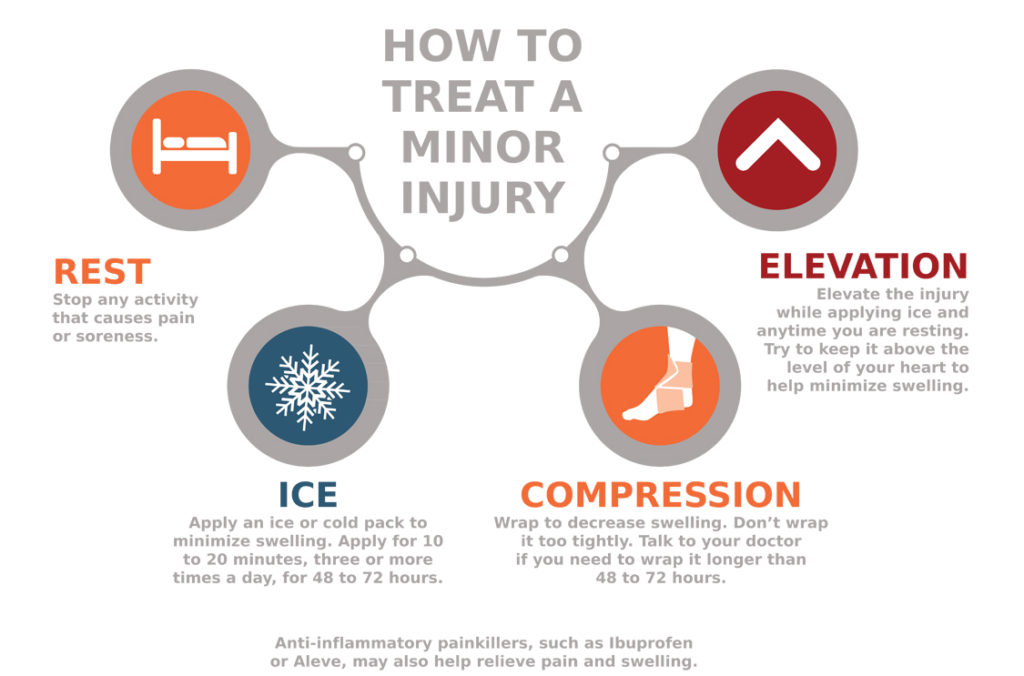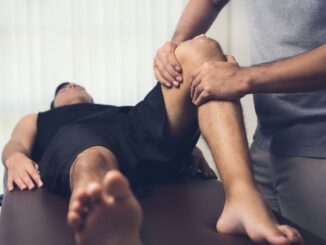
Visits to the emergency room can get expense fast. As deductibles increase, the patient pays out more on those bills. (That’s one reason I co-founded Go To Ortho, the first immediate injury care clinic in the Portland area.) When you or your child is hurt one decision becomes paramount: can I take care of this at home or do we need immediate medical help? Here are some general guidelines for several common injuries, when and how to treat them at home, and when you should see a doctor.
These are general guidelines. If you think you may be experiencing a life-threatening emergency, call 911.
- Cuts
If you or your child is cut, it can be a scary experience because of the sudden sight of blood. Open wounds are the second most common injury to be treated in an emergency department, but not every cut requires immediate medical attention.
To stop the bleeding:
- You need to stop or slow the bleeding right away.
- Apply firm pressure with a clean cloth for at least 15 minutes.
- While applying pressure, elevate the injury.
Treating at home:
If the bleeding has stopped and the wound is not severe enough to need stitches, you can treat the cut successfully at home:
- Wash the cut well with soap and water (do not use any other cleansers).
- After washing the wound, apply antibiotic ointment.
- Put your band aid or bandage on across the cut, rather than lengthwise.
- Change the bandage once a day or anytime it gets wet or dirty.
When to seek immediate medical attention:
- If the bleeding hasn’t stopped after 15 minutes of pressure, it’s time to go to an immediate injury care clinic like Go To Ortho or an urgent care.
- If the cut is deep: for example, if you see fat, muscle or bone, you definitely want to seek immediate medical attention.
- Will you need stitches? A good way to tell is to pinch the sides of the wound together – if it looks better that way, you will probably want to get stitches to prevent scarring and help the wound heal. If the cut is on your face, you may be particularly concerned about scars.
- You will need to get stitches right away – within six to eight hours of the injury – to prevent scarring.
- If you are seeking medical attention, leave the wound as is – don’t use an antibiotic ointment before stitches.
- Jammed Finger
If you’ve ever jammed your finger, you aren’t likely to forget it anytime soon – it hurts. Even though the pain stops you in your tracks, jammed fingers can be treated at home using rest, ice, compression and elevation (RICE):
When it comes to a jammed finger, “compression” means gently wrapping it to an adjacent finger to give it stability.
Sometimes your finger isn’t jammed, it’s broken. Here a few warning signs that your finger may be broken and you need to go to the doctor:
- Finger is deformed.
- Joint is warm to the touch and you have a fever.
- Finger becomes numb and pale.
- Continued persistent pain and swelling that does not lessen after a few days.
If your child has a jammed finger, be sure to monitor his or her injury for less obvious symptoms like swelling that does not lessen. It’s important to set children’s broken fingers to make sure they don’t experience problems with their hands as their bones continue to grow.
- Bruises
Bruises are common occurrences, especially in active children. Often people will notice a bruise and not remember when they got it. Bruises rarely require a trip to the doctors. However, sometimes bruises form because of a more severe injury.
If your injury includes a painful bruise, you should:
- Rest the injured area.
- Use an ice pack ten to fifteen minutes a day several times a day for the first two or three days after the injury.
- If possible, keep the injury elevated.
- Ibuprofen will also help.
Some symptoms mean that your injury needs medical treatment, including:
- Severe pain.
- Unable to move the injured body part.
- Signs of infections like streaks coming from the injured area.
- A fever.
You also need to make an appointment with your doctor if you notice that you suddenly have started to bruise easily or you have a lot of bruises for no clear reason. This could be a sign of a vitamin deficiency or a more serious problem.
- Blood Under a Nail
Accidentally hitting the end of your finger with a hammer or stubbing your toe can result in not only a swollen, painful toe or finger but also blood gathering under the nail. This trapped blood can cause additional pain and swelling.
If you hurt a finger or toe:
- Use ice (wrapped in a cloth) or an icepack on the injury to reduce swelling.
- Take an over the counter pain medication. Ibuprofen is a good choice because it also helps reduce inflammation.
If the pain is severe or throbbing, and you have blood under your fingernail you can treat this injury at home. This procedure shouldn’t hurt because there are no nerve endings in the nail.
To drain blood from under the nail:
- Clean the toe or finger thoroughly with soap and water.
- Straighten a paperclip.
- Heat it in a flame until it is red hot.
- Place the tip of the clip on the nail and hold it steady – don’t push.
- The hot metal will slowly melt a small hole in the nail.
- Repeat until a small hole forms.
Blood will drain out, relieving the pressure and pain. If this does not relieve the pain, you may have a broken bone or a cut under the nail that will require medical attention.
This procedure is not recommended if you have diabetes, a weak immune system, blood flow problems or if there are signs of an infection such as red streaks leading from the nail or pus.
Injuries like cuts, bruises or a smashed finger are always unexpected. Knowing when and how to treat them at home and when to seek medical care reduces guesswork and can help you save money on unnecessary, expensive trips to the ER.




